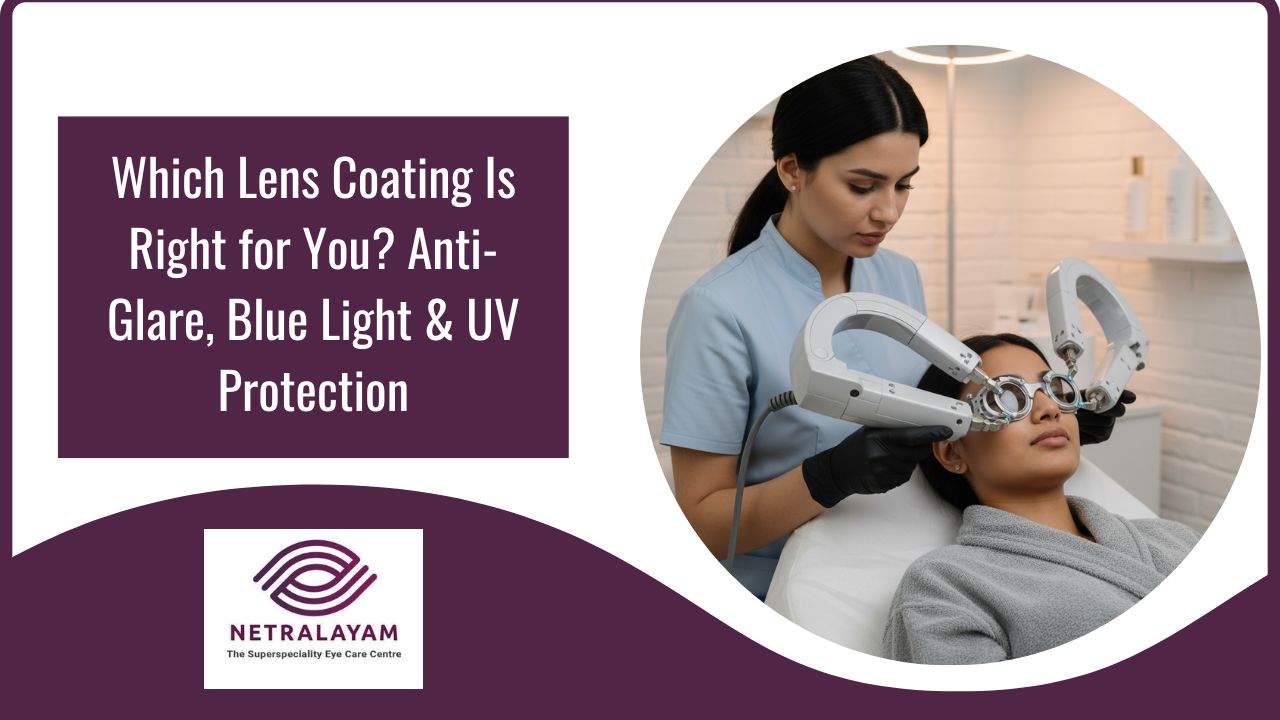Committed to Eye Care with Compassion, Technology and Competency
Committed to Eye Care with Compassion, Technology and Competency

10/21/2025
Ever squinted at a bright screen or struggled with glare while driving? That’s your eyes signaling they could use some support. Lens coatings might seem like minor details, but they make a noticeable difference in comfort and protection. Anti-glare, blue light, and UV coatings each address specific challenges, and in many cases, they can be combined to suit your daily habits.
Learn how these lens coatings can make everyday activities easier while protecting your eyes from strain and long-term damage.
Lens coatings are specialized layers applied to eyeglass lenses to enhance vision, comfort, and protection. While your prescription determines how well you see, coatings address issues like reflections, harmful light exposure, and lens durability.
Some of the most common types of lens coatings include:
Each coating serves a unique purpose, and in many cases, they can be combined for maximum protection and comfort.
Anti-glare lens coatings, also called anti-reflective coatings, minimize reflections on your lenses, letting more light through to your eyes. This reduces visual distractions and improves clarity.
If you drive often, work under bright lights, or spend long hours in front of a screen, anti-glare coatings can significantly reduce eye strain and improve visual comfort.
Blue light is a high-energy visible light emitted from digital screens, LED lights, and smartphones. While it’s natural in sunlight, excessive exposure indoors can affect your eyes.
Office workers, students, gamers, and anyone using computers, tablets, or smartphones frequently will benefit from blue light lens coating. Many people also choose computer glasses with a blue light filter for extended screen use.
UV rays can contribute to cataracts, macular degeneration, and photokeratitis (essentially a sunburn for your eyes). Long-term exposure without protection increases the risk of these conditions.
Everyone can benefit from UV protection, particularly those who spend time outdoors, drive frequently, or live in sunny climates.
Many of these coatings can be layered with anti-glare, blue light, or UV coatings, allowing you to customize your glasses for your specific needs.
To get the most out of your coated lenses:
Proper care ensures coatings last longer and continue providing optimal protection.
Your eyes work hard every day, and glare, screens, and bright sunlight only add to the load. Choosing lenses that fit your daily habits can make looking at the world easier and more comfortable. The right eyewear keeps your vision sharp, reduces strain, and helps your eyes stay rested and protected, so you can focus on what really matters without missing a detail.
Tired of glare, screen strain, or squinting in sunlight? Netralayam can help you see clearly and comfortably every day. Our experts guide you in choosing lenses that fit your lifestyle and protect your eyes.
Don’t settle for ordinary, schedule your visit today and give your eyes the care they actually deserve.
Consider your routine, screen time, driving, or outdoor exposure, and consult an eye specialist to select lenses that match your lifestyle and comfort needs.
Yes, lenses with blue light filters or anti-glare coatings help minimize digital eye strain, reduce fatigue, and improve visual comfort during extended screen use.
Yes, UV rays can penetrate windows. UV-protective lenses help reduce long-term eye damage, even indoors or in cars with sun exposure.
Anti-glare lenses reduce reflections, while blue light lenses filter harmful screen light, both easing eye strain and enhancing clarity for daily tasks.
Yes, modern lenses combine anti-glare, blue light, and UV protection, offering comfort, reduced strain, and eye safety for indoor and outdoor activities alike.

Leave a Reply Cancel reply